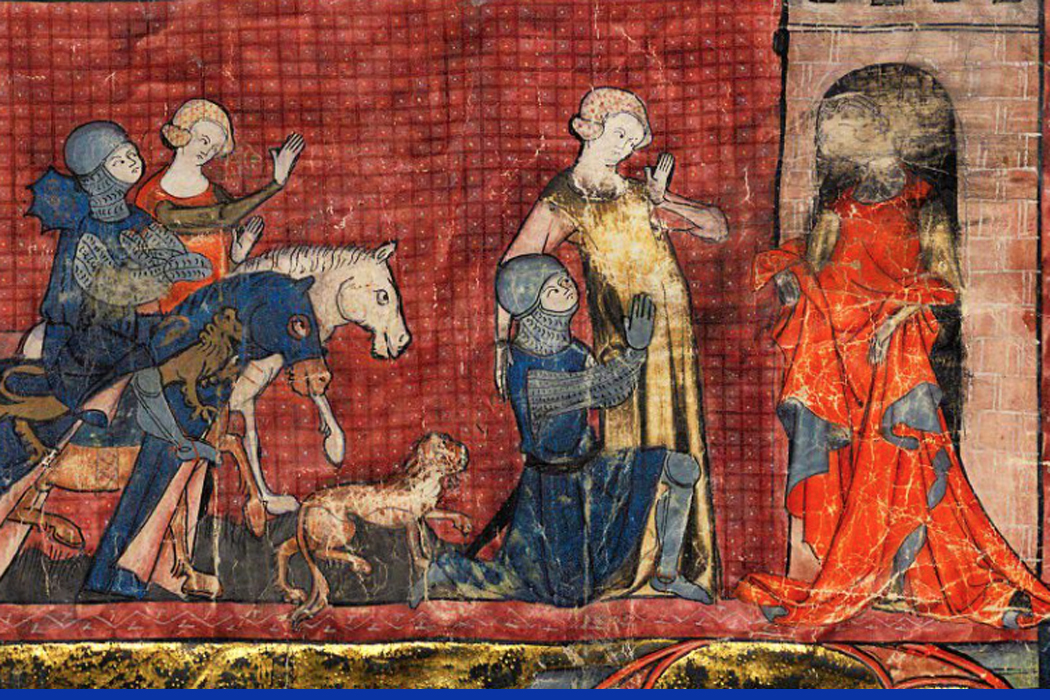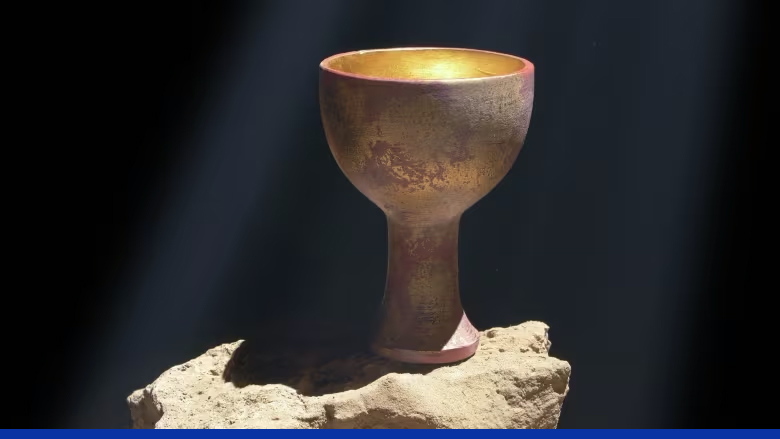
You might have often come across the phrase ‘holy grail’ in English, meaning something that is sought after and attained only after great ordeal. For example: One-piece is the holy grail of piracy. God save me from the fanatics! But apart from being just a phrase that serves the English lexicon, the ‘holy grail’ is also an object of great sanctity in the Christian faith, even though it does not find a mention in the bible. I am not a Christian so try not to be so hard on me, will you? I will briefly address the holy grail in this article according to the degree of my knowledge upon the matter.
Chrétien de Troyes and his fable
Before anything and everything it was Chrétien de Troyes who invented the idea of the Grail in his fable named «Perceval ou Le Conte du Graal» or “Percival, the Story of the Grail”. Chrétien de Troyes was a french writer of the 12th century (a period where Christianity was being fervently defended both at home and the land of the infidels). In his legend he depicts a central figure by the name of Perceval who is raised in a forest by his mother, away from the ways of the knighthood to protect him from the dangers that claimed his father’s life.
However, inevitably, Perceval encounters knights for the first time and is so taken by their appearance that he decides to travel to King Arthur’s court to become a knight himself. After learning the ways of a knight, Perceval visits the Fisher King’s castle on his demand. Now this is the central part of the story. You see, this Fisher King was suffering from an insidious illness that found no remedy in conventional treatments. And his bad health was inversely proportional to the well being of his kingdom. As long as he is sick , his kingdom would be engulfed by misery and hunger. Since science had no cure for him, he turned to superstitions. A prophecy which had the power to heal him provided all the conditions fulfilled. A prophecy that stated that a chosen one by the Grail itself will have the power to activate the healing properties of the Grail. The Grail was described as a mysterious and marvellous utensil which had the power to bring prosperity and success to the one who would drink from it. But there was a catch – the latter had to have a pure heart at the moment of drinking! The Fisher King, expecting Perceval to be the chosen one, summoned him at his castle. When Perceval went there he saw a procession of the Grail which was carried out by a young servant. That was a decisive moment for Perceval because he had to ask a question about the Grail to the Fisher King. But he had obtained instructions from her aunt, who was a sorceress, to not ask careless questions during his quest for the Grail. Therefore, Perceval killed the cat before curiosity could kill the cat (Okay, I admit that was lame).
Unfortunately, it wasn’t a wise decision. The prophecy demanded that questions, above all the correct ones, had to be posed so that the powers of the Grail could be unleashed. But his silence opened up instead the mouth of the Fisher King who said, “Young man, you only had to ask a question, and if you had asked it, you would have set me and my kingdom free from this curse. But you let go of a great opportunity”. It was too late for Perceval as he didn’t do the right thing. And unfortunately, unlike most tales, this one doesn’t have a happy ending. The Fisher King was left to his devices. This is the earliest of the interpretations of the Grail which was made by Chrétien de Troyes in his work, which would be later undertaken by various writers with different outcomes.

The Arthurian Tale
There is another interpretation of the fable of the Grail where the center of attention is King Arthur himself. Let us know a little something about King Arthur, shall we? Arthur’s birth is often shrouded in mystery. He was born of the union between King Uther Pendragon and the wife of another man, Igraine. King Uther used to be accompanied by a magician named Merlin. It is with the help of this Merlin that King Uther transformed himself into Duke Gorlois, to have intercourse with Igraine. In this way Arthur was born to Igraine. But Merlin would take the infant away from everyone so that he grows up shielded from all the conspiracies that made up the kingdom. And grew up he into a brilliant young man to finally be able to rule Great Britain. But before that he had to prove himself as the legitimate claimant to the throne. Merlin had already prepared the necessary documents in this regard, figuratively speaking though (it’s called humour).
There was a legendary sword that Merlin had thrust into a rock. And the sword had a name: Excalibur! Whoever succeeded in pulling out Excalibur from the rock would be deemed the legitimate heir to the throne. And as expected, Excalibur was just waiting there to be pulled out by Arthur. Once the exploit is accomplished, Arthur becomes the sovereign of Great Britain with Camelot as his capital. He took many knights under his tutelage, one of whom was Perceval. Arthur would hold discussions with his knights at the famous Round Table, where he summoned them to convene as equals. But adhering to the fact that Arthur and the Fisher King had been merged into a single entity, and considering that the Fisher King was doomed to fall into despair, Arthur, too, had to face his destined despair. The days of misery succeeded each other, and the kingdom was in ruins. At such a juncture, Arthur sent his men to search for the Grail which is believed to be the healer of sickness, the destroyer of hungriness. After many adventures Perceval finally succeeded in procuring the sacred object, but this time without asking any questions about the Grail at all.
After the arrival of Perceval with the Grail, King Arthur was made to drink from it. It was a miracle that was visible to the naked eye. King Arthur had been cured of his illness! With the restoration of his health, his kingdom also began to prosper once again. This is the version that was adapted into the film Excalibur. In this version there is no Fisher King but instead it is Arthur himself who falls ill. Notwithstanding the differences in the story, the struggle is the same: find the damn Grail! (Sorry, audience, for getting carried away). In both of the interpretations the Grail is presented as something carrying enormous healing powers. But how did this grail became synonymous with Eucharist (a Christian sacrament commemorating the final meal that Jesus shared with his disciples before his crucifixion), even though the Holy Grail does not find it’s mention in the Bible?
The Christian affinity
The Holy Grail made it’s first appearance in the 12th century CE under the penmanship of Chrétien de Troyes. All the versions of the Bible were already available long before the 12th century CE. There is no mention of the Holy Grail on any of the versions. And yet, how did this fictional sacred object become so incorporated into Christianity? To understand this phenomenon we need to look for answers in the past: It was spring. Jesus and his twelve apostles were gathered in a room in Jerusalem. This was a close gathering of Jesus with his disciples. They were about to dine together. As they ate, Jesus took bread, gave thanks, broke it and gave it to his disciples, saying,
“This is my body given for you; do this in remembrance of me.”
In the same way, after supper, he took the cup of wine, saying, “This cup is the new covenant in my blood, which is poured out for you. The breaking of bread and sharing of the cup are actions commemorated in the Christian sacrament of Communion. Now, you might remember the Grail being described as a vessel, as a cup. And Jesus Christ, through Bible (Mark 14:12-26), is known to have used a cup to serve the wine. Well, this aspect of the Grail should have been the cause for adherents to make a connection between it and the sacrament of Holy Communion.
Who knows, maybe Chrétien de Troyes probably did not have such designs while he was writing his fables about the Grail . Maybe it was a religious agenda from the part of the prelates to distort the facts and present the Grail as something holy, but which in reality was a piece of pure fiction. It could be that Chrétien de Troyes was inspired by the Bible to write about the Grail. But the Bible can do well without it. You see, the 12th century CE was a period where Christianity was a dominant force in European life, exerting a significant influence over politics, culture, education and societal norm. The Roman Catholic Church, led by powerful popes, maintained a rigid ecclesiastical hierarchy, with the Church serving as both a spiritual and political authority. It was also that period in time where expeditions were being carried out to reclaim the holy land from the infidels. So, maybe the story of the Grail, which was becoming increasingly popular, was used as an instrument to give a new momentum to Christianity. Arthur was a great king and warrior. He had accomplished a lot in his lifetime yet he fell into misery because he was lacking the Grail. Only after the possession of the Grail could he recover from his woes. The Grail here could be symbolized as religion. That is to say, you could be a great king and accomplish many great feats, but as long as you don’t have a religion, you are doomed forever. And secular rulers usually didn’t get along very well with the Pope.
Many came to challenge the authority of the Pope and had to incur his wrath. This could have been a reminder of the importance of religion in the state. It is wise to know that this theory about manipulation of the Grail for political ends is purely hypothetical and it is how I see things. Over time, the Grail’s identity shifted from an undefined or magical object in early tales to the definitive Christian relic we recognize today– an object of divine power and mystery, intertwined with the life and passion of Jesus Christ. The legend of the Holy Grail remains one of the most compelling examples of how mythology can be adapted to suit the spiritual and cultural values of different eras and societies.

Conclusion
Whether we wish to believe in the Christian aspect of the Grail or not is up to us. But what we cannot deny is the fact that it is held as a sacred object, both in the story and in real life. And for me personally, I see some moral lessons to be drawn from the story of Perceval. For example: When Perceval was at the Fisher King’s court, he hesitated to ask any question about the Grail. As a result he failed the quest. Well, for me, that act of his, that indecision, is what should be avoided. In life one should not hesitate when an opportunity presents itself. We must posses the spontaneity to take action and always be ready to face the necessary consequences when the time comes. But we will regret it our whole lives if we are content to just sit back and watch!







Your work strikes a balance that few writers manage to achieve — it is both intellectually stimulating and emotionally resonant. There is a seamless flow from one idea to the next, and each paragraph is like a stepping stone leading the reader toward a deeper understanding of both the topic and the self. I feel as though I’ve gained not just knowledge, but a new way of seeing the world.